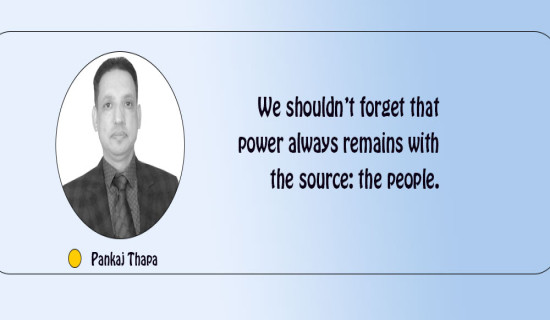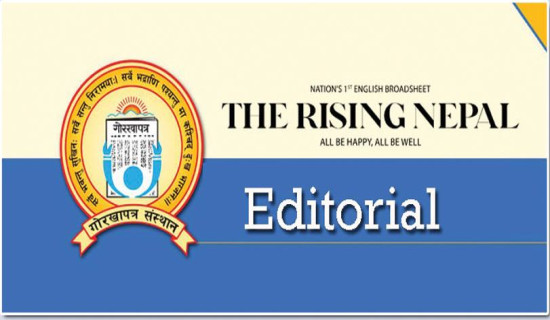- Sunday, 26 October 2025
Subversion Of Conventional Aspects
Krishna Prakash Shah's abstract paintings do not follow the traditional techniques, methods, ideas, and philosophy; therefore, these works subvert the established canon, aspect, and approach.
He goes beyond the creation of conventional ideas for making paintings. Generally, paintings have a flat and two-dimensional surface, but Shah creates a freestanding cubical object and presents his expression through it. We have 3-D surfaces as his latest abstract paintings (see fig. no.1).
Breaking Rules
Then, we can see them by moving around them. His works break the traditional rules and invent their codes for creation. As a result, Shah's paintings are unique and immensely creative. We do not have sufficient documents to support the artist who executed a three-dimensional cube as a form of painting in the world for the first time, but I have never seen such work earlier as a genre of painting.
Generally, viewers found 3-D cubical objects used for sculpture, design, and other purposes but not as a form of painting, so it is a matter of study and concern of research in the intellectual sphere. Instead of a conventional two-dimensional surface, the artist creates a painting in a real three-dimensional object. In this sense, the artist subverts the conventional aspects.
Furthermore, in early times, paintings were created on the wall. Later, the art was created on canvas and hung on the wall. There is some change in these methods. Jackson Pollok put the canvas on the floor and poured colours on it.
At that time, this is another revolution in the method of creating a painting. Recently, Shah created a cube and painted pictures on three dimensions or six surfaces of an object.
We can go around his painting as in three-dimensional sculpture. It is another remarkable departure from tradition in creating paintings. Thus, he subverts the conventional aspects of creating an artwork.
Shah exhibited that cube painting in his solo painting exhibition titled Beauty Beyond the Real World at Kunst Gallery, Kalkar, Germany. After grand success in Germany, he participated in National Fine Arts Exhibition-2021 and was awarded for his 3-D cubical painting 'National Fine Arts Award - 2021' in the genre of Contemporary Painting in a grand show.
His paintings are always experimental in the sense that he uses unconventional material, media, and techniques in his creations.
In some of his compositions, he uses the flow technique of painting by pouring liquid colours over the canvas on the floor and tilting the canvas toward the required direction to ease the flow of the colours for creating abstract shapes.
When the flow finished its course, he used the brush, knife, and hand to enhance images and shapes as per his vision and the demand of the composition. The flowing liquid colours convey a sense of flexibility, rhythm, softness, comfort, and liveliness.
Sometimes, he blends sands with colours to create unusual textures through the projection of particles from the surface of the canvas.
Shah's creative process is unique. When he is capable of concentrating on himself in a certain meditative mood, he is disconnected from the material world of everyday reality.
Then slowly and gradually, certain waves of joyous feelings start to emerge and shuttle back and forth, creating self-experiencing joy and happiness. He grasps this abstract visual impression of mere lively feelings and spills them onto canvas.
Shah's paintings present the visual music in colours, and the music is abstract, which cannot be seen in the form of real things in the world. The beauty and aesthetic pleasure are perceived from the abstract melody created by harmonious colours in unique patterns.
The viewers' response to referential and representational paintings is similar. The meaning is finite. Once it is understood, it does not provide sensation.
New Experience
But the process of perception in abstract art is drastically different, for it gives a new experience at the beginning, and it keeps on magnetizing the viewer infinitely since the unlimited possibilities in the painting have not been explored completely.
The more we flow in the colours, the more horizons are open. Since we can view the work from alternative perspectives, the artwork is plural and playful. The work does not dictate that the viewers impose certain significance.
The painting provides complete freedom for dynamic movement in rhythm. The composition opens a new world on the canvas and offers a unique experience for the viewers through harmonious and cohesive colour composition. Therefore, Shah's paintings subvert the perception train towards an unknown dimension.
In Shah's book, Nepali Abstract Paintings: A Development Analysis, the artist argues that abstract thought guides toward invention and construction in the field of art, science, and technology. Before the concrete realization of a new thing, the inventor imagines a new vision.
The imagination or visualization is abstract, which takes concrete shape after experiment and production. In most of the inventions and innovations, intuition, dreams, and visions of the human mind have been materialised in reality.
Thus, the artist states that abstraction leads us toward progress and development. The ultimate target of human life is to achieve happiness, but modern physical advancements have upshot numerous waves of miserable and unusual discords in humanity.
The modern civilisation must come across with positive feelings against the fake, serious, and negative consequences of human creation through the use of creative paintings, which can communicate positive thoughts and feelings in offices, schools, stores, and homes and away.
That will support human beings to be serene, healthy, and creative.
Therefore, his paintings try to depict happiness with joyful colour, rhythm, and harmony rather than depicting conventional subject matter. In this way, Shah's paintings subvert the conventional canon in multiple ways as an experimental base of abstract paintings and open a new perspective and horizon for the new generation.
(Khanal heads the photography and arts section of Gorkhapatra)

















